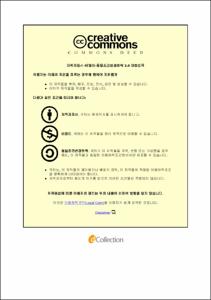설화의 이야기판을 활용한 한국어 말하기 교육 연구
= A Study on Korean Speaking Education Based on the Folktale Storytelling Arena : focusing on A Tale of Kongjwi and Patjwi
- Type
- Thesis
- Alternative Title
- 「콩쥐팥쥐」를 중심으로
- Department
- 대학원 한국어문학과
- Issued Date
- 2011
- Publisher
- 한성대학교 대학원
- Keyword
- 한국어 말하기 교육; 이야기판; 설화
- Files in This Item:
-
-
Download
 000000898124.pdf
기타 데이터 / 813.27 kB / Adobe PDF
000000898124.pdf
기타 데이터 / 813.27 kB / Adobe PDF
-
Items in Repository are protected by copyright, with all rights reserved, unless otherwise indicated.